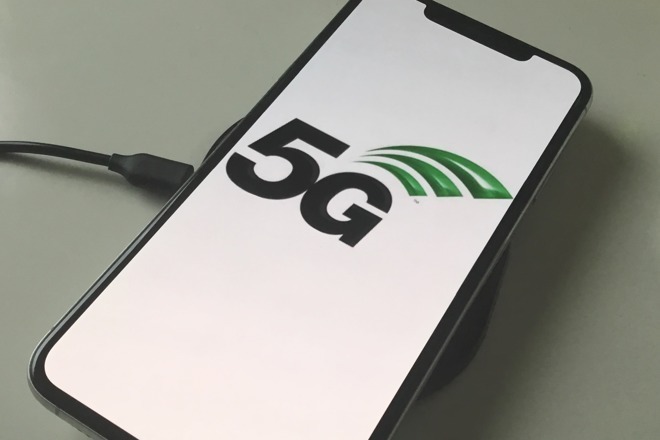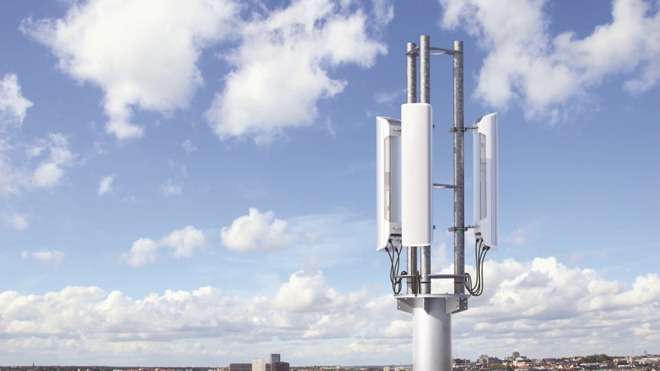AT&T to roll out true 5G to consumers in 'weeks'
It's still chiefly a lower-speed version of the technology, but genuine 5G is shortly to reach 'tens of millions' of AT&T customers across the US. True full speed 5G for businesses is also expanding.

AT&T is to bring a true 5G service to US consumers, with a program rolling it out nationwide over the next few weeks. Unlike its previous and contentious '5GE,' which proved to be only a renamed regular 4G service, the new one will be low-band 5G. AT&T is launching initially in five cities, and will be promoting it when it begins selling the Samsung Galaxy Note 10+ 5G from December.
"When we introduced the US to 5G last year," said Thaddeus Arroyo, CEO, AT&T Consumer, in a statement, "we started with a business-first and experience-based strategy to lay the foundation for innovation to come."
"We're now introducing consumers to the future of wireless with broad 5G service included in our best unlimited plans for 5G devices like the Samsung Galaxy Note 10+ 5G," he continued.
Over the next few weeks, AT&T plans to launch this low-band 5G in Indianapolis, Pittsburgh, Providence (Rhode Island), Rochester (New York), and San Diego.
The company says it has also planned a rollout to many more markets including Boston, Buffalo, San Jose and more, though it has yet to specify a schedule.
AT&T's full-speed service, which the company calls 5G+ and is 5G over the nmmWave spectrum, is currently in parts of 21 cities. The company says speeds in those areas has been increased and that it will be adding the service to parts of a further 9 cities early next year.

Sample 5G tower installed on the outskirts of a residential neighborhood
To use the low-band 5G service, users will need a compatible phone -- iPhones are not expected to have 5G until September 2020 -- and to subscribe to specific AT&T packages. The company currently offers its Unlimited Extra or Unlimited Elite plans for $75 and $85 per month respectively.
It says 5G will be added to those plans at no existing cost.
Sprint similarly included 5G on its Unlimited Premium plan when it launched in four cities earlier this year. Verizon is charging a $10 5G premium over its previous 4G price.
AT&T is promoting the use of the Samsung Galaxy Note 10+ 5G with its service -- similarly to how T-Mobile used the Galaxy S10 5G in June. Then AT&T will begin taking orders for that phone itself on November 25. The phone is expected to launch in the first half of December.
This means that Samsung, in conjunction with the AT&T network, is considerably ahead of Apple in bringing 5G to its users. However, by waiting almost a year longer before launching its 5G iPhones, Apple may sidestep the current confusion between these different low-band and mmWave forms of 5G.

AT&T is to bring a true 5G service to US consumers, with a program rolling it out nationwide over the next few weeks. Unlike its previous and contentious '5GE,' which proved to be only a renamed regular 4G service, the new one will be low-band 5G. AT&T is launching initially in five cities, and will be promoting it when it begins selling the Samsung Galaxy Note 10+ 5G from December.
"When we introduced the US to 5G last year," said Thaddeus Arroyo, CEO, AT&T Consumer, in a statement, "we started with a business-first and experience-based strategy to lay the foundation for innovation to come."
"We're now introducing consumers to the future of wireless with broad 5G service included in our best unlimited plans for 5G devices like the Samsung Galaxy Note 10+ 5G," he continued.
Over the next few weeks, AT&T plans to launch this low-band 5G in Indianapolis, Pittsburgh, Providence (Rhode Island), Rochester (New York), and San Diego.
The company says it has also planned a rollout to many more markets including Boston, Buffalo, San Jose and more, though it has yet to specify a schedule.
AT&T's full-speed service, which the company calls 5G+ and is 5G over the nmmWave spectrum, is currently in parts of 21 cities. The company says speeds in those areas has been increased and that it will be adding the service to parts of a further 9 cities early next year.

Sample 5G tower installed on the outskirts of a residential neighborhood
To use the low-band 5G service, users will need a compatible phone -- iPhones are not expected to have 5G until September 2020 -- and to subscribe to specific AT&T packages. The company currently offers its Unlimited Extra or Unlimited Elite plans for $75 and $85 per month respectively.
It says 5G will be added to those plans at no existing cost.
Sprint similarly included 5G on its Unlimited Premium plan when it launched in four cities earlier this year. Verizon is charging a $10 5G premium over its previous 4G price.
AT&T is promoting the use of the Samsung Galaxy Note 10+ 5G with its service -- similarly to how T-Mobile used the Galaxy S10 5G in June. Then AT&T will begin taking orders for that phone itself on November 25. The phone is expected to launch in the first half of December.
This means that Samsung, in conjunction with the AT&T network, is considerably ahead of Apple in bringing 5G to its users. However, by waiting almost a year longer before launching its 5G iPhones, Apple may sidestep the current confusion between these different low-band and mmWave forms of 5G.

Comments
From all the reading I've done 5G gives:
- Faster speeds - dubious value for smartphones, as you mentioned
- decreased latency - again, dubious value for smartphones; maybe flying high performance drones with your smart phone, but that is a niche market at best. God help my patient if I'm doing robotic surgery on my iPhone.
- increased number of connections - This might make a difference for highly congested areas such as stadiums, etc. Most people talk about allowing 'connected cars' for smart traffic management and similar uses which doesn't involve your phone. It's also not clear to me if you actually need a 5G phone to be one of these increased number of connections
I've seen some people talk about the ability to use your phone as a smart pass for the train system or tollway or allowing hyper-precise geolocation. Again, the actual need and application for these uses is questionable.Another question that I haven't seen an answer to is how 5G will affect 4G service. 5G allow differing utilization of the spectrum and much of 5G involves upgrades to the network backbone infrastructure (you can't get 10 Gbps speeds if your network maxes out at 2, and latency is ultimately determined by the slowest link.) I can definitely see the 5G infrastructure upgrades improving 4G service.
The final question is timing. People keep talking about 5G enabling new technologies and uses which will likely be true. The problem is if a use doesn't exist yet, it will take time for the use to develop and then more time for it to become commonplace enough that it even approaches 'essential' status, and many of these new uses will undoubtedly fizzle. That's just the nature of technology.
Your 4G phone will not instantly become obsolete and stop working and the vast majority of smartphone users really don't need the extra features; there are a whole lot of people who never do anything more than check facebook on their smartphones. The bottom line is the hype far exceeds the reality. Just like it did with 4G. and 3G.
"5G to consumers in weeks" means I will get AT&T true 5G where I live and work? right ? My Foot!!!
I suspect real 5G will be almost ready for prime time by consumers at large around the time I need to consider buying a new phone, like in 3-4 years.
Great, stay on the slower speed. The less the better for the higher speed one's that want and need it.
In a few years all cell phones will be 5G. Try finding a up to 3G phone only. It will be added, you will pay extra for it.
No need for 5G for our own current needs (I believe that rural areas of the country would benefit in a big way with 5G deployment however as I understand it.)